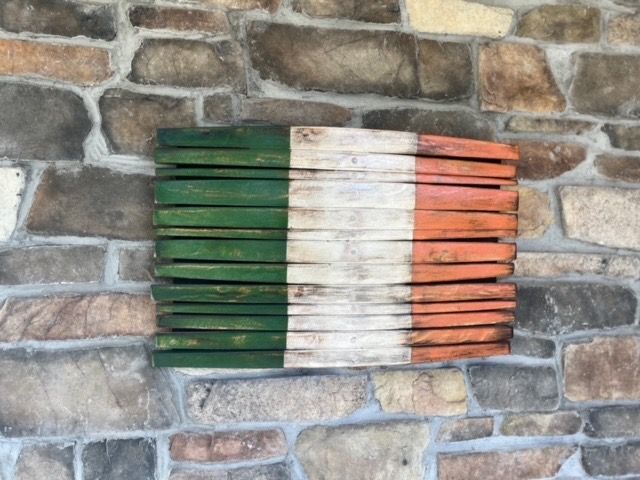McCarthy is a brilliant musician who is an asset to any project.
By Daniel Neely
Button accordion Benny McCarthy’s new solo accordion album “Press And Draw” is an exciting one. This might sound odd, as it’s a true solo work, with no accompaniment at all. But the approach here is compelling. What McCarthy has done is take 15 different tune types and paired them with 15 different accordions, representing a variety of different makers, tunings, and vintages. Can an approach like this descend into simple show-and-tell? It sure can, but that’s not what happened here. McCarthy’s put incredible thought into this fascinating album, and I think it’s one that will sneak up on a lot of listeners.
https://www.youtube.com/watch?v=w7IG9VPVHQM&feature=youtu.be
What can one say about McCarthy's playing that hasn’t been said? A former student of the great Bobby Gardiner, he grew up in Deelish, Co.Waterford, and is a brilliant musician who is an asset to any project he gets involved with. Most readers will be familiar with his band Danú, which is one of the finest groups going, and fans of his will be aware of the recordings and tours he’s done with all sorts of prominent players. But I think it’s an album like this where we see the nuance and subtlety in his music in better detail. (I made a similar claim with the Tin Sandwich Band’s album “By Hook Or By Crook,” on which he played alongside John & Pip Murphy [harmonica] and Donal Clancy [guitar]; like this one, it was a different kind of project that brought out the same sort of nuance.)
https://youtu.be/W2DDvnHu3xc
A listen to the album’s opening track, the barn dances “An Madraín Rua/Bill Malley’s,” shows what I mean. It’s played on an old Globe melodeon, which is a classic instrument from the early 20th century and the sort on which many of the earliest Irish accordion recordings were made. It was a time when barn dances were a popular sort of tune and for me the Globe’s silvery, reedy timbre represents the proper “pairing” to the tune. The spirit McCarthy captures with it is great – the tune is light, bouncy and a great start to the album.
https://youtu.be/2G--V7rdBrc
The way he’s matched the tune to the box throughout gives each track something interesting to offer. “Banbridge Town” is a waltz with a gentle swing, that he plays on 1940’s Grey Hohner, an instrument that has a smooth, warm tone – it’s a perfect pairing. He takes a very different approach to “Brian Boru’s March,” which is played on a recently built Miniature Saltarelle in C. It has a bit more punch than the other boxes on the album and suits march time well. The reels that start with “Peter Feeney’s Dream,” which are played on a recent Bertrand Gaillard box, and the slides “Chase Me Charlie,” played on slightly older Saltarelle Connemara, have a similar sound, but that decision makes sense in context. Then there’s the slow air “Sliabh Geal gCua,” which he plays on a 1949 Grey Paolo Soprani, an instrument iconic in Irish music. The tone of this one is so sweet, so lush, it’s hard to imagine it being played on a different box. Later on in the track, he adds incredibly tasteful harmonies in the bass that give the air beautiful depth, but also added value because the box just sounds so nice.
An excellent illustration of the contrast between boxes can be heard between the tracks “The Quilty Fisherman / Planxty Joe Burke” and “Job Of Journeywork.” The tracks, which are consecutive on the album, are wonderfully played and have lift to spare. On the former, though, he’s playing a vintage Grey Hohner Erica. It’s a warm, full sounding box with keys that clack and rattle, and an integral part of this instrument’s sound. On the latter track, he plays a fifties-era Paolo Soprani 2 Coupler Blue Badge-Key, a hot box with it’s own characteristic sound. Listened to consecutively, it’s very easy to hear how the two boxes are very different from one another, but at the same time evoke different players and different moments from Irish music’s past. Just fascinating to hear.
“Press And Draw” is a must have for button accordionists. McCarthy is a brilliant musician and the variety here will have the box players saying “oh, wow” over and over again. But the music will have wide appeal because it has a “pure drop” charm that is very pleasing, from top to bottom. Although they bring very different energies, “Press and Draw” reminds me very much of Cormac Begley’s self-titled 2017 debut. Both players employ a large number of different instruments as a way of exploring the subtleties of tone and timbre. But McCarthy’s album also reminds of Begley’s in how hearing a musician through several different instruments reveals the beauty and character innate in their music from lots of different angles. It’s something that lets a listener get to “know” a musician in a fairly intimate way and something you get from both McCarthy and Begley’s albums. “Press and Draw’s" a good one, check it out for sure! To learn more (and to see a gallery of the boxes), visit boxbenny.com.










